Kenneth T. Jackson is an urban, social, cultural historian, author, and academic. He is the Jacques Barzun Professor Emeritus of History at Columbia University, where he has also chaired the Department of History.

A tenement is a type of building shared by multiple dwellings, typically with flats or apartments on each floor and with shared entrance stairway access. They are common on the British Isles, particularly in Scotland. In the medieval Old Town, in Edinburgh, tenements were developed with each apartment treated as a separate house, built on top of each other. Over hundreds of years, custom grew to become law concerning maintenance and repairs, as first formally discussed in Stair's 1681 writings on Scots property law. In Scotland, these are now governed by the Tenements Act, which replaced the old Law of the Tenement and created a new system of common ownership and procedures concerning repairs and maintenance of tenements. Tenements with one- or two-room flats provided popular rented accommodation for workers, but in some inner-city areas, overcrowding and maintenance problems led to shanty towns, which have been cleared and redeveloped. In more affluent areas, tenement flats form spacious privately owned houses, some with up to six bedrooms, which continue to be desirable properties.

Graduate School of Architecture, Planning and Preservation (GSAPP) is the architecture school of Columbia University, a private research university in New York City. It is also home to the Masters of Science program in Advanced Architectural Design, Historic Preservation, Real Estate Development, Urban Design, and Urban Planning.
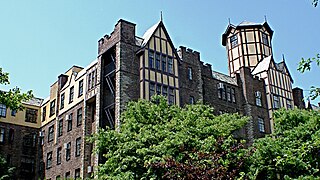
Hudson View Gardens is a cooperative apartment complex located on Pinehurst Avenue and Cabrini Boulevard in the near vicinity of West 183rd and 185th Streets, located in the Hudson Heights subsection of the Washington Heights neighborhood in Manhattan, New York City. It overlooks the Hudson River to the west and Bennett Park – which includes Manhattan's highest natural point – to the east. The complex was constructed as a housing cooperative from 1923 to 1925. In 2016 it was listed on the National Register of Historic Places.

Michael David Sorkin was an American architectural and urban critic, designer, and educator. He was considered to be "one of architecture's most outspoken public intellectuals", a polemical voice in contemporary culture and the design of urban places at the turn of the twenty-first century. Sorkin first rose to prominence as an architectural critic for the Village Voice in New York City, a post which he held for a decade throughout the 1980s. In the ensuing years, he taught at prominent universities around the world, practiced through his eponymous firm, established a nonprofit book press, and directed the urban design program at the City College of New York. He died at age 71 from complications brought on by COVID-19 during the COVID-19 pandemic.

San Leucio is a frazione of the comune of Caserta, in the region of Campania in southern Italy. It is most notable for a resort developed around an old silk factory, named a UNESCO World Heritage Site in 1997.
Douglas Putnam Haskell was an American writer, architecture critic and magazine editor. Today he is widely known for his coinage of the term Googie architecture in a 1952 article in House and Home magazine.
Robert Bruegmann is an historian of architecture, landscape and the built environment. He is a professor at the University of Illinois at Chicago, and a specialist on the Chicago school of architecture. Bruegmann is best known for his research on the architectural firm of Holabird & Root, and is also a commentator on urban sprawl.
Richard W. Longstreth is an architectural historian and a professor at George Washington University where he directs the program in historic preservation.
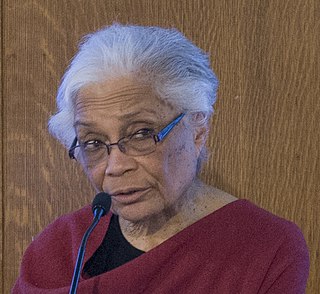
Sharon Egretta Sutton, is an American architect, educator, visual artist, and author. Her work is focused on community-based participatory research and design. She is a professor emerita at the University of Washington. In 1984, she became the first African American woman to become a full professor in an accredited architectural degree program while teaching at the University of Michigan. She has also taught at Parsons School of Design, and Columbia University.
Mitchell Schwarzer, is an American architectural historian, and professor emeritus. He writes on architecture and the built environment. He was a professor of architectural and urban history in the department of the history of art and visual culture at California College of the Arts.
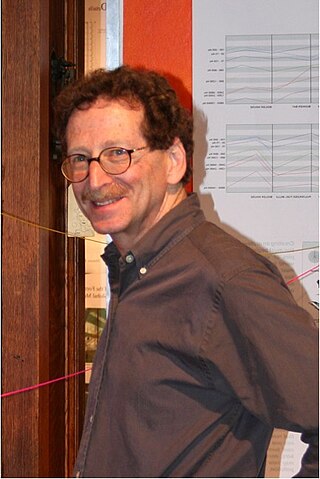
Andrew Scott Dolkart is a professor of Historic Preservation at the Columbia University Graduate School of Architecture, Planning and Preservation (GSAPP) and served as the Director of the school's Historic Preservation Program from 2008 to 2016.
Robert Tavernor is an English Emeritus Professor of Architecture and Urban Design at the London School of Economics and Political Science (LSE), and founding director of the Tavernor Consultancy in London. He is an architecture historian and urbanist, who has published widely on architecture and urban design, including the impact of tall buildings on historic cities. His academic career includes being appointed to the Forbes Chair in Architecture at the University of Edinburgh at age 36.
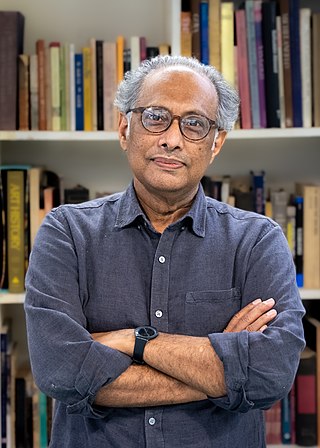
Kazi Khaleed Ashraf is a Bangladeshi architect, urbanist and architectural historian. Writing from the intersection of architecture, landscape and the city, Ashraf has authored books and essays on architecture in India and Bangladesh, the work of Louis Kahn, and the city of Dhaka. His various writings on the architecture of Bangladesh have provided a theoretical ground for understanding both the historical and contemporary forms of architecture, while his written and design work on Dhaka advances that city as a "theorem" for understanding urbanism in a deltaic geography. Ashraf and contributing team received the Pierre Vago Journalism Award from the International Committee of Architectural Critics for the Architectural Design publication Made in India. He has also co-authored a number of publications with the architect Saif Ul Haque. Ashraf has recently established an international publication series called Locations: Anthology of Architecture and Urbanism that will present works and features from around the globe.
Andrew Jackson Thomas (1875–1965) was a self-taught American architect who was known for designing low-cost apartment complexes that included green areas in the first half of the twentieth century.
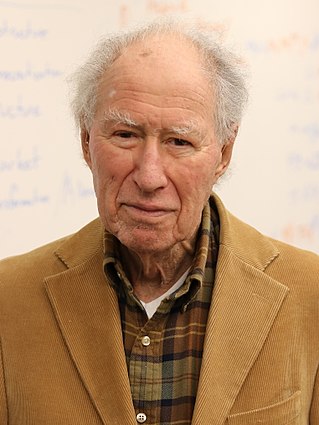
Peter Marcuse was a German-born American lawyer and professor of urban planning.
Mario Gooden is an architect in the United States. He is the director at Mario Gooden Studio based in New York, New York. He was previously the principal of Huff + Gooden Architects which he co-founded with Ray Huff in 1997. Gooden is also a Professor of Practice and Director of the Master of Architecture program at the Graduate School of Architecture, Planning and Preservation (GSAPP) of Columbia University, where he teaches architectural design and theory. Gooden held previous academic appointments at the Yale School of Architecture as the Louis I. Khan Distinguished Visiting Professor, the Southern California Institute of Architecture (Sci-Arc) in Los Angeles, the University of Arizona (Tucson), the University of Florida (Gainesville), Clemson University, and The City College of New York.
The Urban Design Lab (UDL) is an interdisciplinary research unit of Columbia University’s Earth Institute in New York City. Established in 2005, it advances design-based solutions to issues in sustainable development and global urbanization. Richard Plunz, founder of the UDL, currently directs the program.
Felipe Correa is a New York-based architect, urbanist, and author. He is the founder and managing partner of the design practice Somatic Collaborative.

The 1199 Plaza is a housing project in East Harlem.










